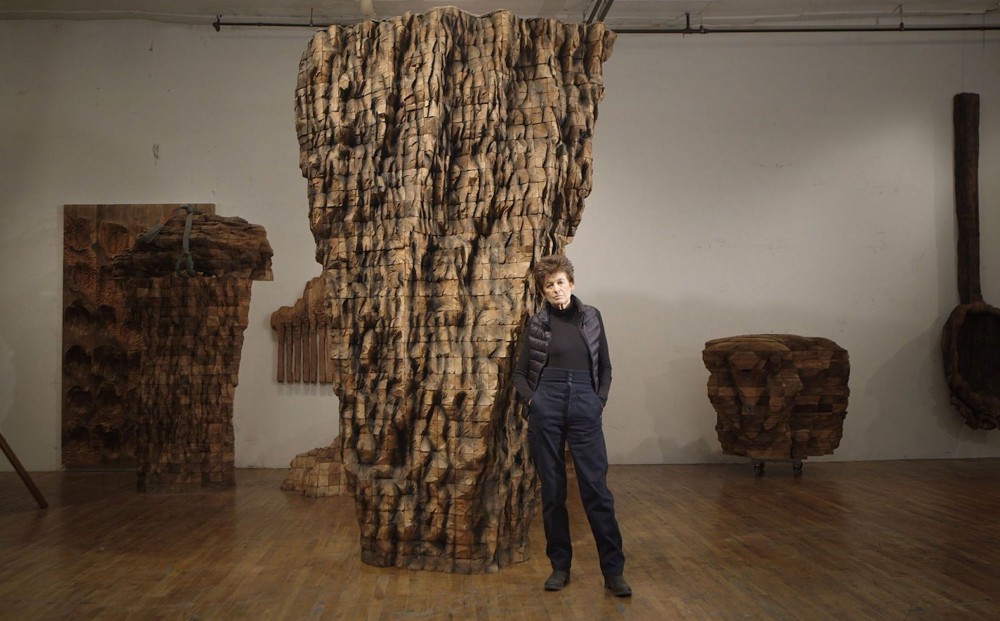URSULA VON RYDINGSVARD: INTO HER OWN
Now Streaming
MUST END THURSDAY, JULY 30
DIRECTED, PRODUCED & PHOTOGRAPHED BY DANIEL TRAUB
In INTO HER OWN, filmmaker Daniel Traub nimbly illuminates the fascinating journey of Ursula von Rydingsvard (b. 1942) – her difficult early life in a family of nine emigrating to the US after five years in post-WWII German Displaced Persons camps, a traumatic first marriage, her arrival in 1970s New York to establish herself as an artist, and the staggering, triumphant body of work she subsequently produced. The sculptures are massive, yet strangely intimate. Some feel imbued with an almost primal energy: a series of early installations reminiscent of wings in what became New York’s Battery Park; a monumental yet inviting piece outside Brooklyn’s Barclays Center; the stunning “Scientia” at M.I.T. which evokes the power of nature and the firing of brain synapses. Interviews with luminaries such as artist Sarah Sze and museum director Adam Weinberg, as well as the artist herself are intertwined with studio visits and behind-the-scenes footage of her mammoth creations being installed. All combine to show how, through sheer talent and determination (and countless planks of cedar), she has become one of the world’s greatest artists (and one of a very few women) working in monumental sculpture.
Presented with support from Film Forum’s Documentary Fund.
Leadership gifts received from: Hugo Barreca, Leon and Michaela Constantiner, Ostrovsky Family Fund.
USA 2019 57 MINS. ICARUS FILMS
Reviews
“Tantalizing… [Von Ryndingsvard’s] sculptures, carved or molded from cedar, are towering, surprising mammoths that seem like organic growths bursting from the ground. They intertwine the abstract with the figurative. Unlike the giant steel statements of Richard Serra, they don’t intimidate; rather, they invite close examination and even physical touch.”
– Glenn Kenny, The New York Times
“Von Rydingsvard’s favored forms are massive. They slump on the floor like hollow, tuberous mounds into which it’s tempting to crawl; or jut out from the wall; or else rise up like inverted megaliths or weathered geological forms. They’re dramatic, sensuous, but at the same time almost accidental, as if shaped organically by wind and water.”
– Sebastian Smee, Art Critic for The Washington Post, March 2019

